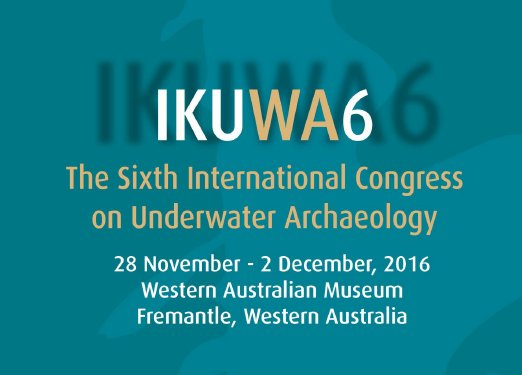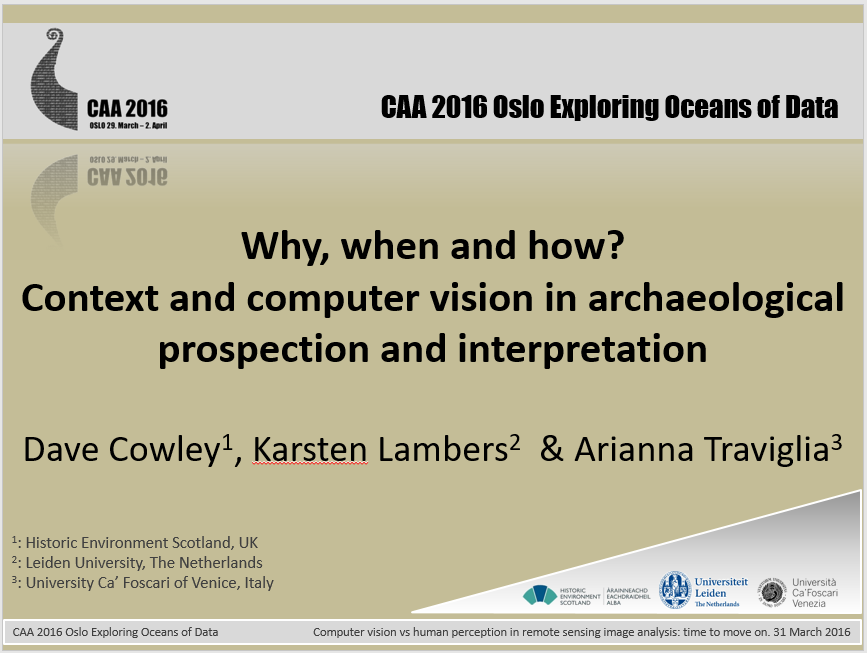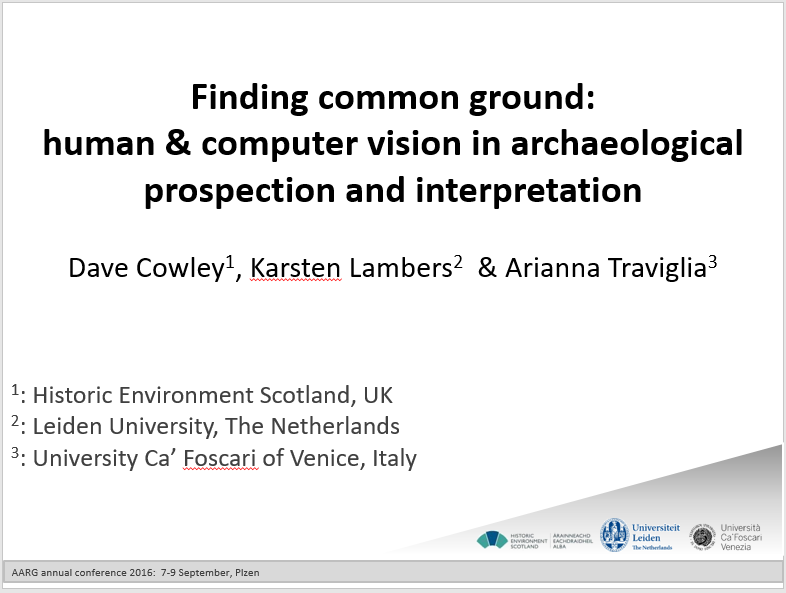Talks Conferences & Seminars
Sensing tidal landscapes: artificial Intelligence and computer vision methods for underwater archaeological heritage in shallow waters
- Date: 8 September 2016
- Conference: International Congress of Underwater Archaeology IKUWA6 Celebrating our Shared Heritage, Fremantle WA (Australia), 28 November-2 December 2016
- Author: Arianna Traviglia
- Keywords: tidal landscapes, coastal environment, remote sensing, object detection, Aquileia-Grado Lagoon
Abstract
Remote sensing—intended as the methodology that uses aerial, radar and satellite imagery to pinpoint potential archaeological sites on landscapes or waterscapes—is being increasingly adopted as a critical component of the suite of research methodologies normally employed in the analysis of coastal and shallow aquatic/marine (lagoon or tidal) environments as its water penetration capabilities have long proved suitable for detection of underwater archaeological features. Depth limitation, water reflective properties and water turbidity are only partially limiting the discovery opportunities its use can provide and the advantages of its application over shallow waters in favourable circumstances are manifested.
A number of approaches in Pattern Recognition (PR) applied to aerial and satellite imagery of coastal tidal wetlands offer the opportunity to adopt classification methods to identify potential underwater archaeological features based on the automatic learning of patterns, regularities and shapes.
These approaches, which enable machine learning of patterns and the use of learned patterns for classification, can overcome the limitations of both simple optical recognition or previous methods based on automated pattern matching, and allow for recognising underwater patterns/shapes produced by a variety of natural or artificial elements.This paper will expand on some of the preliminary testing of this technique over the tidal landscapes of the Grado-Marano Lagoon (Italy), under which lays the southern fringes of the suburban development of Aquileia, one of the largest cities of the Roman Empire.
Why, when and how? Context and computer vision in archaeological prospection and interpretation
- Date: 31 March 2016
- Conference: CAA2016 Oslo Exploring Ocean of data, Oslo (Norway) 29 March-2 April 2016
- Authors: Dave Cowley, Karsten Lambers and Arianna Traviglia
- Keywords: object detection, automated detection, remote sensing, aerial archaeology
Abstract
As the session abstract identifies, the debate over applications of semi-automated or supervised feature extraction techniques in archaeology has tended to be polarised between believers and doubters. In large part the polarisation of discussion probably stems from a lack of explicitness about how archaeological feature identification is undertaken and how the processes, whether ‘automated' or ‘human', of identifying patterns, shapes and features interrelate with archaeological interpretation.
Furthermore, the varying contexts of these processes in multi-scaled archaeological prospection have not necessarily been defined as fully as they might.
Such ambiguity is unhelpful to exploration of the potential of new techniques, and the interfaces between traditional archaeological skills/knowledge and emergent tools. It also makes definition of common purpose difficult.
This paper will explore these issues, looking to address the reasons why the application of computer vision to archaeological prospection is vital, but also examining the workflows and outcomes of different approaches and processes, both manual and automated. These are important steps in addressing some key questions, including: how can we create clarity about why and when automated approaches are desirable? what are the roles of (traditional/manual) archaeological experience and skills in designing algorithms? and how can automated/manual approaches be used iteratively to improve archaeological detection?
Finding common ground: human and computer vision in archaeological prospection and interpretation.
- Date: 8 September 2016
- Conference: Aerial Archaeology Research Group Annual Conference AARG 2016, Pilsen, Czech Republic.
- Authors: Dave Cowley, Karsten Lambers and Arianna Traviglia
- Keywords: object detection, automated detection, aerial archaeology, remote sensing.
Abstract
Discussion of applications of semi-automated or supervised feature extraction techniques in archaeology benefits from explicitness about how and in which contexts archaeological feature identification is undertaken and how the processes, whether ‘automated’ or ‘human’, of identifying patterns, shapes and features interrelate with archaeological interpretation.
This paper will explore these issues, looking to address the reasons why the application of computer vision to archaeological prospection is vital, but also examining the workflows and outcomes of different approaches and processes, both manual and automated. Examples from other disciplines will shed light on how human and computer vision can be integrated in a transparent and efficient way, and how they can assist interpretation.
This will help to address some key questions, including: how can we create clarity about why and when automated approaches are desirable?; what are the roles of (traditional/manual) archaeological experience and skills in designing algorithms?; and how can automated/manual approaches be integrated to improve archaeological detection?
Last update: 17/04/2024



